If we are sending manned interstellar missions to other star systems, it becomes very hard to keep masses and power levels nearly reasonable. Interstellar travel missions really work out better after humanity has scaled up overall human power levels by a thousand or even a million times by industrializing the solar system.
Various anticipated propulsion seem quite doable for unmanned probes, but the power levels and other aspects of the systems get into multiples of current human civilization quite quickly for manned missions.
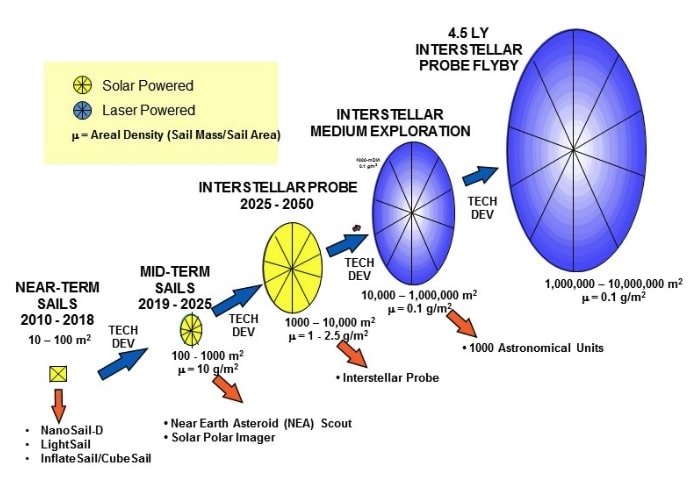
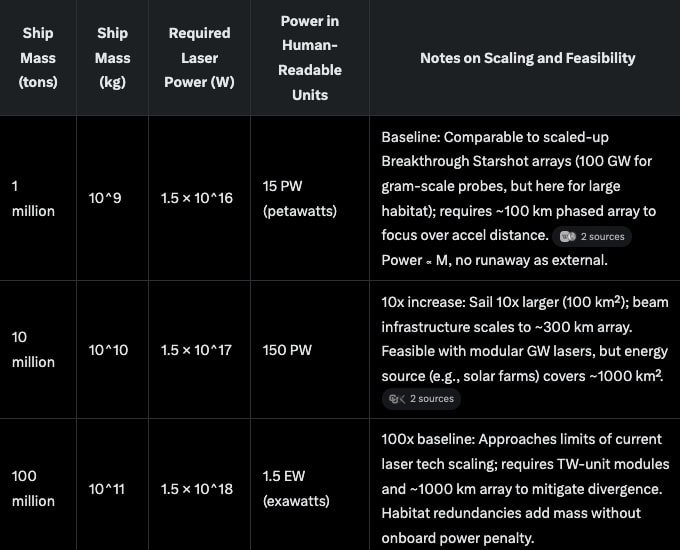
There is slow progress towards proving out concepts like fission fragment rockets.
Ryan Weed has a NASA NIAC project to improve the concepts around fission fragment rockets. Fission fragment rocket engine (FFRE) that is exponentially more propellent efficient than rocket engines currently used to power today’s space vehicles and could achieve very high specific impulse (>100,000 sec) at high power density (>kW/kg). Current proposed designs for Fission Fragment Rocket Engines are prohibitively massive, have significant thermal constraints, or require implementing complex designs, such as dusty plasma levitation, which limits the near-term viability. Ryan proposes to develop a small prototype low-density nuclear reactor core and convert the nuclear energy stored in a fissile material into a high velocity rocket exhaust and electrical power for spacecraft payloads. The key improvements over previous concepts are:
1. Embed the fissile fuel particles in an ultra-low density aerogel matrix to achieve a critical mass assembly
2. Utilize recent breakthroughs in high field, high temperature superconducting magnets to constrain fission fragment trajectories between moderator elements to minimize reactor mass.
The aerogel matrix and high magnetic field (above 20Tesla) allows for fission fragments to escape the core while increasing conductive and radiative heat loss from the individual fuel particles. NIAC work will provide detailed mission analysis of fast transit to SGL for direct imaging and high-resolution spectroscopy of a habitable exoplanet at a distance of up to 100 light years. The FFRE propulsion system could provide delta-V to reach the SGL in less than 15 years and provide the slowdown and maneuvering capability at SGL. The telescopes would act as a single pixel detector while traversing the Einstein Ring region, building an image of the exoplanet with enough resolution to see its surface features and signs of habitability.
Pre-interstellar concepts look at scaling technology for faster in solar system missions. The fission fragment propulsion is explored for Earth Mars transport but it shows its superiority for longer missions out to Saturn and beyond.
All Aspects of Plasma Magnets and Dynamic Soaring Can Stay Smaller and More Efficient
The plasma magnet drive with dynamic soaring is a system that could be plausibly scaled for human crewed missions up to 2-3% of light speed without needing gigawatt power systems. It seems one of the systems with the fewest technological challenges. There are many other proposals to get to this speed.
Solar sails that fly very close to the sun and laser pushed sails would work as well. However, making laser pushed sails that were big enough to carry a human crew would rapidly increase the power systems required into the the tens of gigawatts and even terawatts of power.
There have been some laboratory experiments and theoretical work done to validate aspects of the plasma magnet propulsion concept. The Plasma Magnet is a wind drag device invented almost twenty years ago by Dr. John Slough from the University of Washington. A rocket that uses a propellant to create momentum. A plasma magnet (newer /
Wind Rider design) uses the pressure of the solar wind to gather momentum. This type of propulsion actually exists in nature. A dandelion coasts upon the wind to its ultimate destination.
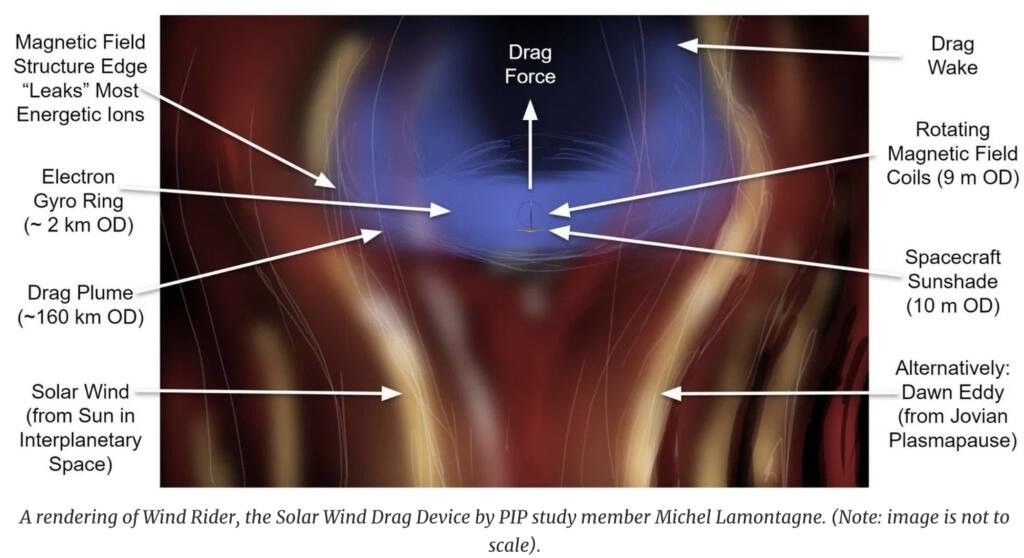
Increasing the size of plasma magnet drive ship would reduce the acceleration. However, the system could take more trips around the sun to build up speed. This is described below where dynamic soaring is used to get up to ten times the speed of the solar wind.
Jeff Greason has proposals to go beyond dynamic soaring plasma magnet systems to reach 25% of the speed of light. Those proposals are in other articles at Nextbigfuture here and here.
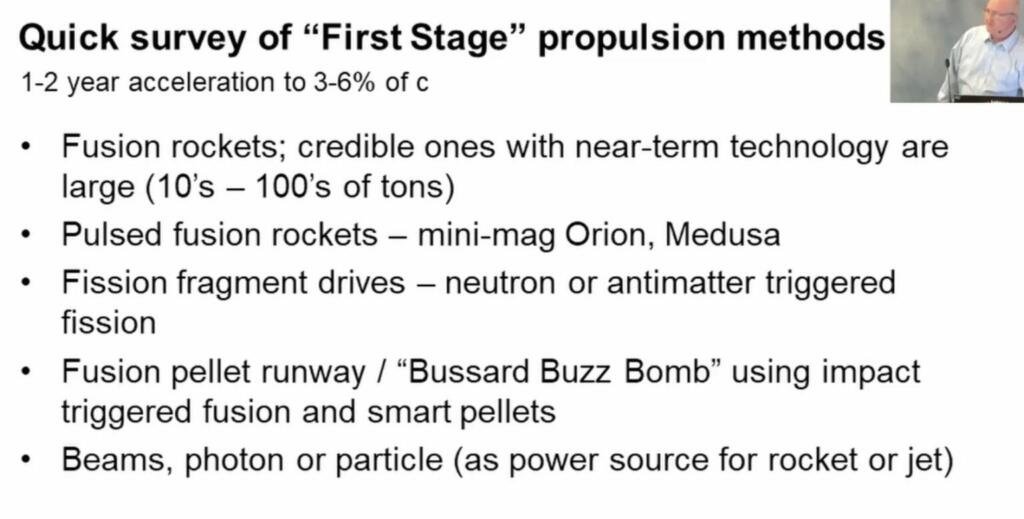
The solar wind is a stream of rapidly moving charged particles. This high-energy stream can vary in speeds from 450 kilometers per second up to 800 kilometers per second, depending on the angle.
Plasma sail propulsion based on the plasma magnet is a unique system that taps the ambient energy of the solar wind with minimal energy and mass requirements.
The drive itself consists of a pair of polyphase coils mounted at or near the center of a cylindrical craft that once energized produce a rotating magnetic field. New designs use superconducting coils and wire.
A magnetic field powers currents that generate a huge shell of plasma to surround the spacecraft, potentially reaching tens of kilometers in size. This shell of magnetically driven plasma expands outward in a disc-like shape until its size is equalized by the pressure of the solar wind and then uses the principle of drag to essentially surf the solar wind like the dandelion on its summer breeze.
Dynamic soaring enables speeds ten times or more than the wind speed. You dive in and out of the differences in wind speed. Diving in and out of the solar wind would enable speeds 10 times the speed of the solar wind. 6900 kilometers per second would be 2.3% of the speed of light.
Dynamic soaring has been proven with the flight of pelicans and sea gulls. Higher speeds have been shown using drones.
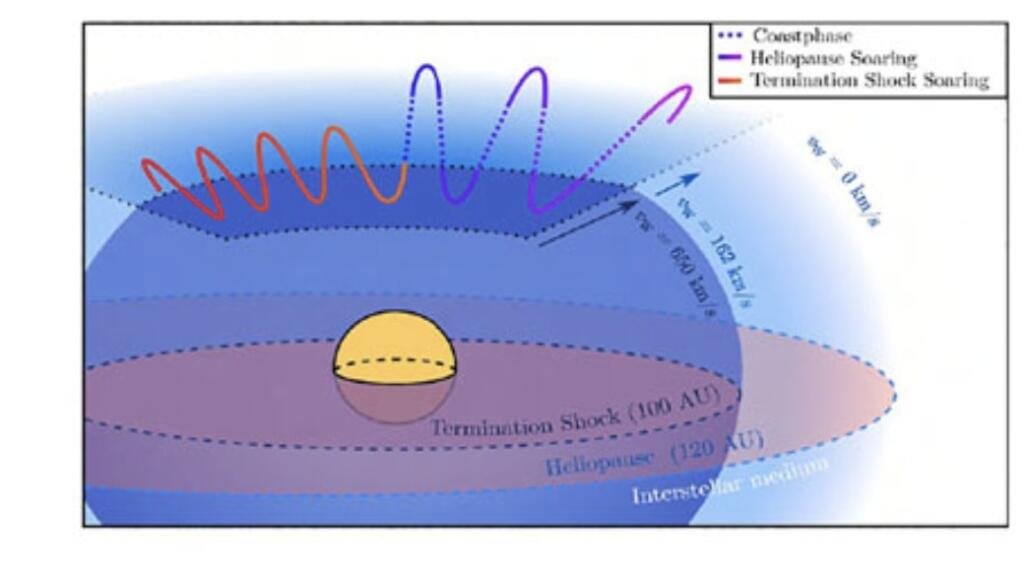

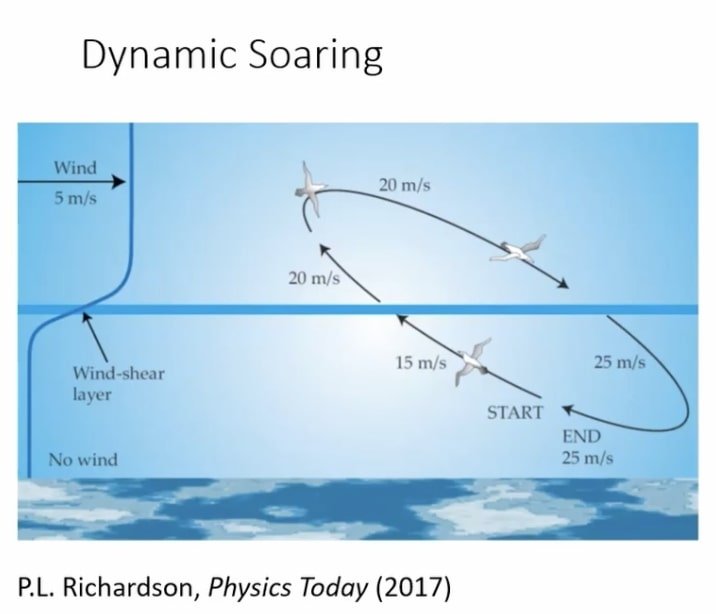
A full proof-of-concept demonstrations in space for plasma magnets has not yet been done.
Here’s a summary of the key evidence and validation efforts so far:
1. Vacuum Chamber Tests: Experiments were conducted in a vacuum chamber using a simulated solar wind source to test the plasma magnet concept. These tests demonstrated:
– Efficient deflection of plasma by the magnetic field, with up to 100% deflection at higher field strengths.
– The ability to produce a high-beta plasma within a dipole magnetic field.
– Absorption of energy from the external plasma wind to sustain higher plasma energy densities.
– Contraction and expansion of the plasma magnet in response to changes in plasma flow.
2. Thrust Measurements: A fiber optic position sensor was used to detect thrust imparted to the antenna from deflection of the simulated solar wind plasma. The experiments showed:
– A large displacement attributable to the deflection of the solar wind simulator by the plasma current generated magnetic fields
– An average thrust of about 1.25 N during a 200 μs pulse, with a thrust power of 0.6 MW.
Theoretical Work and Simulations
1. MHD Simulations: Magnetohydrodynamic (MHD) simulations have been conducted to model the behavior of the plasma magnet. These simulations helped justify the separation of plasma source-controlled and solar wind-controlled regions of the magnetic bubble.
2. Hybrid Simulations: Hybrid simulations were used to study the momentum transfer to the innermost regions of the plasma sail, showing forces roughly perpendicular to the solar wind flow.
Need to prove large plasma bubbles and fly in space
1. Scale: The laboratory experiments were conducted at a much smaller scale than would be required for actual space propulsion.
2. Magnetic Field Falloff: There has been debate and research regarding the rate at which the magnetic field falls off, which significantly affects performance prediction.
3. Energy Extraction Efficiency: The efficiency of energy extraction from the plasma medium remains a challenge, with concerns that it may be too low if similar to vertical axis wind turbines.
Proposed Tests
1. In-Space Demonstration: A technology demonstration in space has been proposed as the next logical step. For example, the Jupiter Observing Velocity Experiment (JOVE), a 16U cubesat demonstrator concept, has been suggested to test the technology.

Brian Wang is a Futurist Thought Leader and a popular Science blogger with 1 million readers per month. His blog Nextbigfuture.com is ranked #1 Science News Blog. It covers many disruptive technology and trends including Space, Robotics, Artificial Intelligence, Medicine, Anti-aging Biotechnology, and Nanotechnology.
Known for identifying cutting edge technologies, he is currently a Co-Founder of a startup and fundraiser for high potential early-stage companies. He is the Head of Research for Allocations for deep technology investments and an Angel Investor at Space Angels.
A frequent speaker at corporations, he has been a TEDx speaker, a Singularity University speaker and guest at numerous interviews for radio and podcasts. He is open to public speaking and advising engagements.


